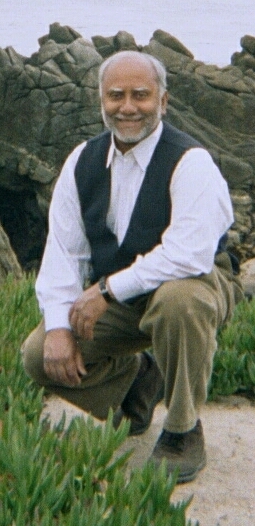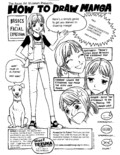~ “I’m begging you, let me work.” ~
~ The ‘God of Comics’~
Lives Again at the
Asian Art Museum
Reviewed by
Michael Chacko Daniels
Editor & Publisher
New River Free Press International
~ I. Getting past rants about brain rot ~
“The God of Comics?” inquires the headmaster of the school I attended (oh, so many years ago), charging into my imagination, pushing aside my muse, as I sit down to write my review. “What did I teach you about brain rot?”
He shoots a fiery glance down at me, an eyebrow arching dangerously as if he would let loose a corrective lightning bolt. “You worshiped him at someplace called the AAM?”
And I imagine bouncing back, “No, Headmaster, I attended a one-of-a-kind exhibition of the works of Japan’s God of Comics, Dr. Tezuka Osamu, at the San Francisco Asian Art Museum, one of the largest museums in the world devoted to Asian art, 6,000 years of it.”
The once educated head gives a deprecatory shake. “Is that what they exhibit in museums these days? Am I supposed to have heard of this God called Dr. Tezuka Osamu?”
Before his eyes reduce me to ashes, I continue, “He was Japan’s pre-eminent, post-war graphic-narrative artist. His extraordinary contribution to Japanese manga earned him the title of the ‘Walt Disney of Japan.’”
“Did you say manga? Is that Japanese for mango, as it is in Malayalam? Does that make Tezuka the God of Mangoes?”
“No, Headmaster! Manga means . . .” “No?” he breaks in. “Hmm. Walt Disney of Japan, you say? Manga must be Japanese for mouse, then? That would make him the God of . . .”
“No, Headmaster! Manga means ‘whimsical pictures’ in Japanese.”
He flicks a finger at me as if brushing away ash. “Reviewing Japan’s God of Comics! A good Kerala-Bombay Christian boy like you from an educated family! What’s next?”
A powerful digit points at me. “Are you trying to prove I was a failure with you in school? Comics have destroyed your brains. This wouldn’t have happened if your dad had burned those comics you sneaked home, nipped your obsession with American comics and all that rot.”
I bow out, saying, “To Dad’s credit, he didn’t. And, if he had, I’d’ve still read them, around the corner or across town.”
~ II. The viewing ~
The brain that comics addled is enjoying the visual delights of Dr. Osamu’s postwar (that’s Second World War) imagination — at the Asian Art Museum on Target’s Free For All First Tuesday, breaking the Honorable Headmaster’s Oxford-Cambridge-educated, mid-twentieth century taboos (Please see “I. Getting past the rants about brain rot.”)
“He was one of my favorite heroes,” I hear a young man say to a friend.
I check the said hero out on the poster display.
He is saucer-eyed, cuddly cute.
He is very young.
He is an androgynous robot, endowed with seven atomic powers.
He is Tetsuwan Atomu (Mighty Atom) or as he is known in America — Astro Boy.
For him, all life, human or otherwise is deserving of respect.
He is capable of complex emotions and thoughts. A different materialization of cuteness. A non-Western, very Japanese one.
“My other favorite was Black Jack — (Burakku Jakku),” the young man adds.
Forget cuddly. This one has a scar tracking across his face, black-white hair cut to dagger points, and eyes that probe into you like surgical lasers.
The effect is an eerily handsome-sinister face.
Yes, forget cuddly.
Burakku Jakku is an unlicensed medical mercenary who soaks the rich with his amazing surgical skills. His saving grace: he helps the poor.
I move on to view Tezuka’s other works: Princess Knight (Ribon no kishi), Buddha, Crime and Punishment (Tsumi to batsu), Jungle Emperor (Jungeru taitei), Ludwig B (Rudovihi B), Marvelous Melmo (Fushigi na Merumo), Metropolis (Metoroporisu), Phoenix (Hi no Tori), and Wonder 3 (Wunda Suri).
The dramatizations of this multi-dimensional genius are powered by movie-like effects and visually compelling black-and-white graphics.
~ III. My recommendation: Go see it! ~
I enjoyed the couple of hours I spent viewing Tezuka: The Marvel of Manga and I highly recommend checking it out. The exhibit, which ends on September 9, 2007, will not be shown anywhere else outside Japan.
Tezuka’s work has been criticized for its dark undertones and characters with tragic backgrounds, the graphic violence, and his inability to rise above Japanese traditional perceptions in depicting and drawing third world people and places.
Nonetheless, you will also discover that the work of this artist who had experienced the destruction brought on by the Second World War and who believed that enlightenment was a continuing process throughout life and through each reincarnation, is infused with his humanism, his belief in the sanctity of all life, and his dislike of the corruptive influence of power, both individual and national. If you can’t afford the entrance fee, remember the first Tuesday of the month is free for all.
~ IV. Tezuka’s Background & Contributions ~
Tezuka is reported to have produced over 150,000 pages of manga. A prodigious body of work by any standard.
Besides exploring themes of metamorphosis, androgyny, women as heroines, harmony and discord between technology and humanity, Tezuka is known for his extensive use of tragic dramatization in his visual narratives and the cinematic techniques that give his black and white graphics a dynamic, compelling quality.
The origins of Tezuka’s manga and his singular contribution to the world of comic art lie in Japan’s fascination with funny pictures and his own development as a person and artist.
Some of the roots can be found as far back as the 12th century in Japan’s giga (“funny pictures of animals and humans”) and in the ukiyo-e (“pictures of the floating world”) of the 18th and 19th centuries, which were appreciated for the idea they projected rather than the actual physical reality.
Modern manga spread around 1930 at a time when the influence of European styles on Japan’s culture intensified.
Tezuka Osamu was born two years earlier in Toyonaka City, Osaka Prefecture in the Kinki region on Japan’s Honshu Island, and raised in the city of Takarazuka, Hyogo Prefecture.
Small and skinny as a young boy, his classmates tormented him.
Look to the blue skies, his mother is reported to have advised him.
She told him stories and took him to see plays in which all the actors were women.
The strong dramatic look of Tezuka’s manga and his treatment of women as heroines probably reflect this formative experience in the world of Japanese theater.
He also loved reading novels and watching films from the western world. Walt Disney’s Mickey Mouse and Max Fleischer’s Betty Boop were important early influences.
Out of this marriage of traditional Japanese graphic arts and theater, and novels and movies from the west, emerged Tezuka’s dramatizations, which are powered by movie-like effects and visually compelling black-and-white graphics.
Although a licensed medical doctor with a Ph. D., Tezuka decided to go with his first love, manga, which he helped shape for many postwar decades.
Not only did his background in medicine give the world of manga a level of respectability that comics in America lacked, his medical knowledge also percolated into his themes, episodes, and heroes (some say Black Jack [Burakku Jakku] is Tezuka’s medical alter ego).
Tezuka’s work has been criticized for its dark undertones, the graphic violence, and his inability to rise above Japanese traditional perceptions in depicting and drawing third world people and places.
Nonetheless, you will also discover that the work of this artist who had experienced the destruction brought on by the Second World War and who believed that enlightenment was a continuing process, is infused with his humanism, his belief in the sanctity of all life, and his dislike of the corruptive influence of power, both individual and national.
Tezuka died of stomach cancer at the age of 60.
His final words were reported to have been: “I’m begging you, let me work.”
Today, output of manga reportedly comprises 40 per cent of all Japanese publications.
Dr. Tezuka Osamu’s influence lives on.
(Details are based on the Asian Art Museum’s press kit [http://www.marvelofmanga.org/] and wikipedia’s articles on Dr. Tezuka Osamu and manga.)
~ V. How to read a page Of Japanese Manga ~
Traditionally, manga are sequenced from top to bottom and right to left as this is the traditional reading pattern of the Japanese written language.
~ VI. Learning how to draw manga ~Click on snapshot above to see it in full scale. Copyright Asian Art Museum (2007): All rights reserved. Young and old alike, if you want to learn to draw manga visit the Asian Art Museum’s Manga Lounge at the
Tezuka: The Marvel of Manga exhibition, which ends on September 9, 2007.For more information aboutTezuka: The Marvel of Mangago to the Asian Art Museum's website
~ VII. Credits ~
Philip Brophy curated Tezuka: The Marvel of Manga, a National Gallery of Victoria touring exhibition in association with Tezuka Productions. The following made the presentation at the Asian Art Museum possible: Wells Fargo, VIZ Media, United Airlines, Dr. Kathy Nicholson Hull, the Henri and Tomoye Takahashi Foundation, and the Phyllis C. Wattis Foundation. Media Sponsors: NBC 11 and Where Magazine.
~ Location ~Asian Art Museum
200 Larkin Street
San Francisco
~ Admission ~
Tickets: $12
Seniors 65 and older with ID: $8
College Students with ID and
Youth ages 13 through 17: $7
Children 12 and under,
SFUSD students with ID: FREE
Members: FREE
First Tuesday of the Month (“Target Tuesday”):
Free for allTezuka: The Marvel of Manga exhibition ends on September 9, 2007



